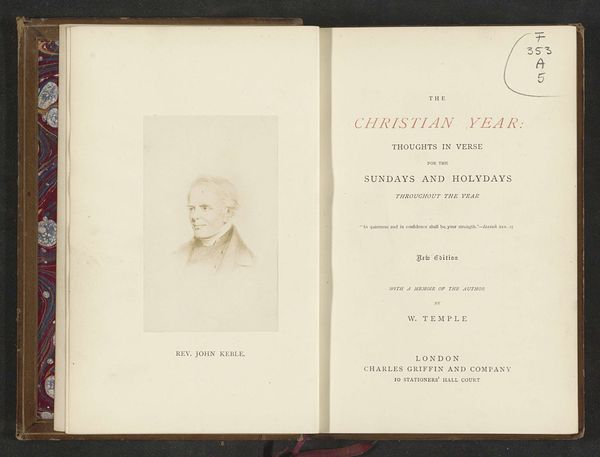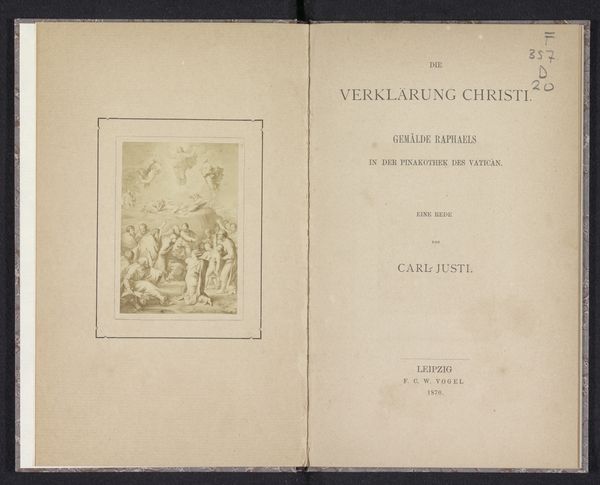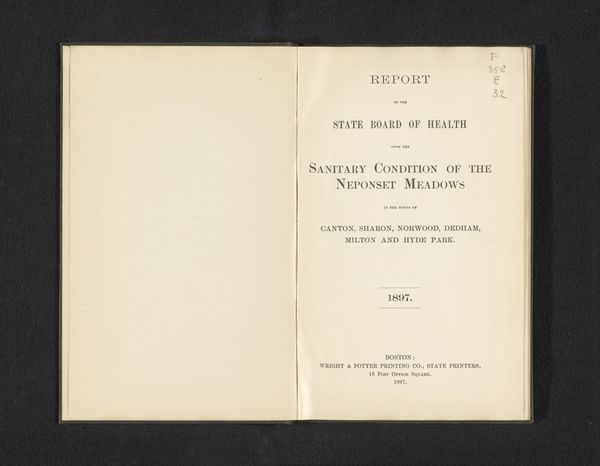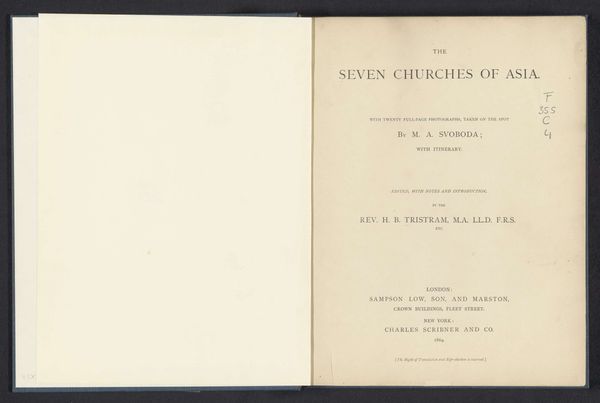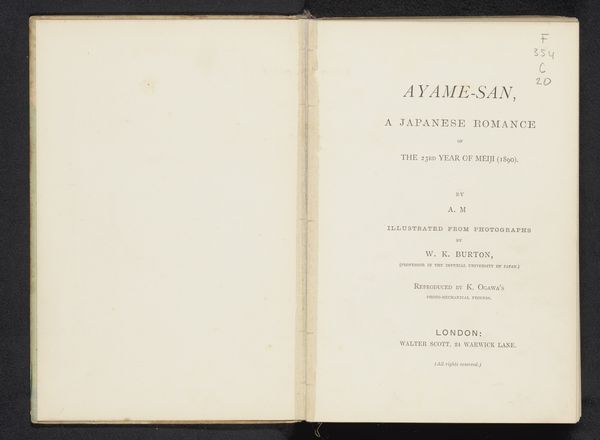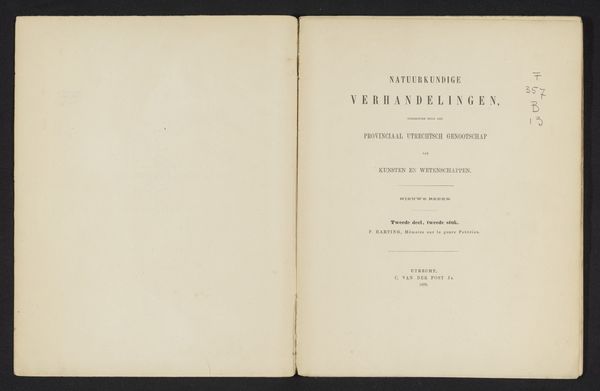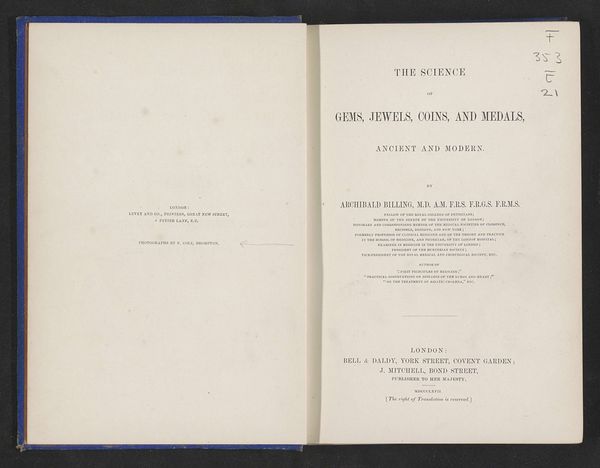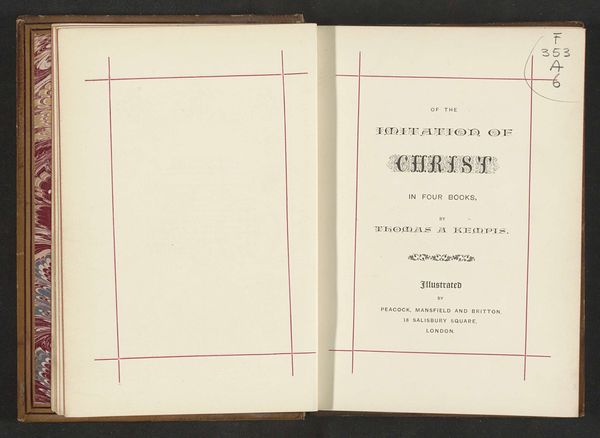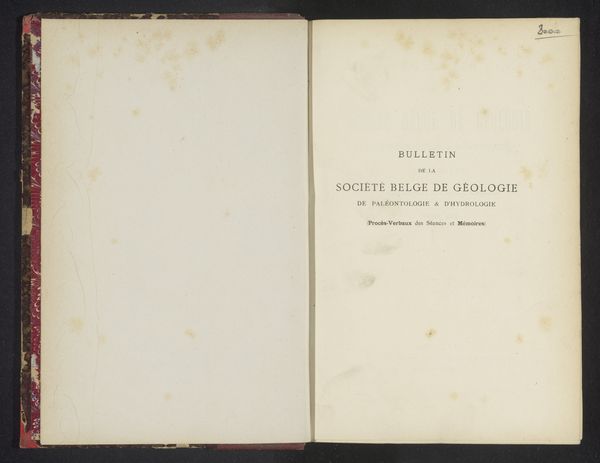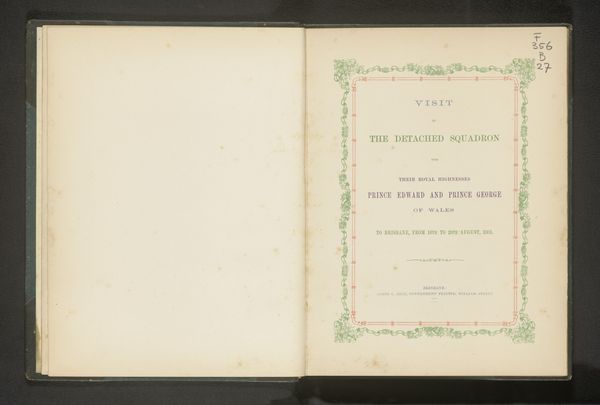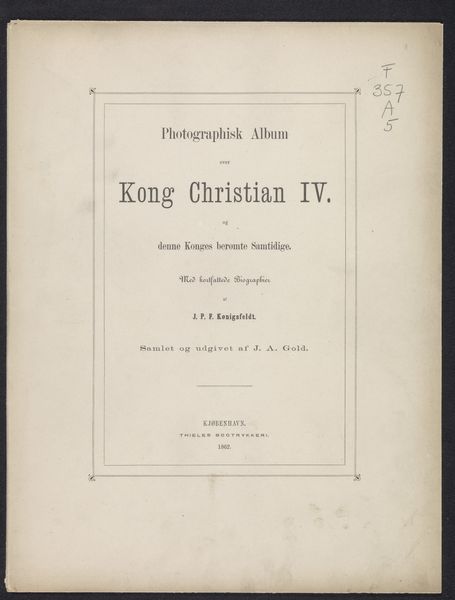
Vestiarium christianum the origin and gradual development of the dress of holy ministry in the church 1868
0:00
0:00
paper, typography
#
aged paper
#
homemade paper
#
paper non-digital material
#
script typography
#
paperlike
#
paper texture
#
paper
#
typography
#
thick font
#
delicate typography
#
letter paper
#
historical font
Dimensions: height 252 mm, width 161 mm, thickness 43 mm
Copyright: Rijks Museum: Open Domain
This is the title page of *Vestiarium Christianum*, printed in 1868, a study by Reverend Wharton Booth Marriott on the evolution of Christian liturgical vestments. The title itself is rich with symbolic weight. The word *Vestiarium* evokes the idea of clothing, which in itself represents identity, status, and role, all of which are central to understanding cultural expression. But more importantly, it alludes to the profound symbolism associated with religious dress. Clothing in a religious context is far from simple practicality. It is an embodiment of spiritual and cultural values, laden with historical and theological significance. Across cultures, clothing has always been a powerful signifier. Think, for instance, of the simple toga of Roman citizens, gradually transforming into the elaborate robes of emperors, or the vestments worn by priests of antiquity. The Christian adaptation and transformation of clothing and garments echo this, but also take on new, powerful meanings. These aren't simply garments. They are symbols of authority, purity, and divine connection, constantly shifting and evolving. They are physical manifestations of faith itself, worn and reinterpreted through the ages.
Comments
No comments
Be the first to comment and join the conversation on the ultimate creative platform.
